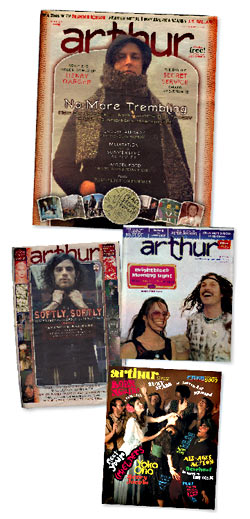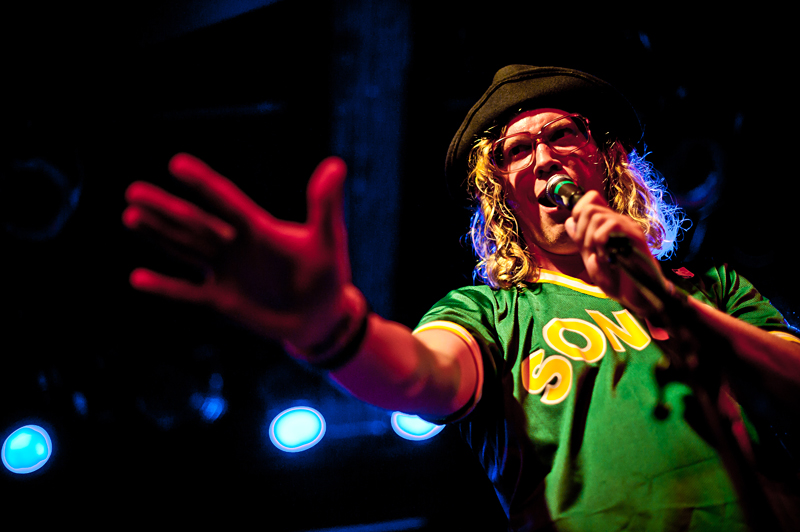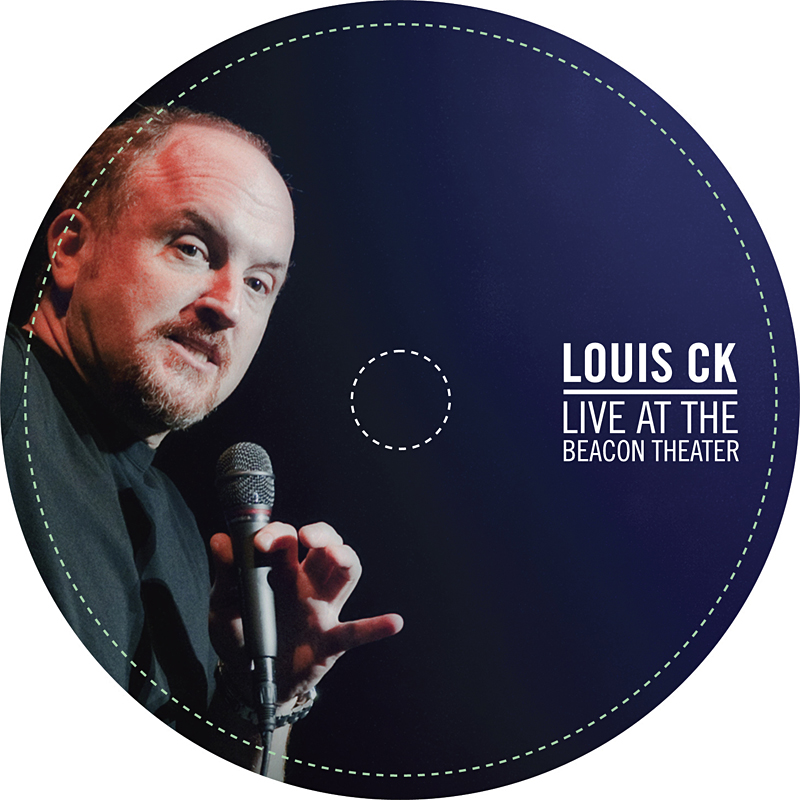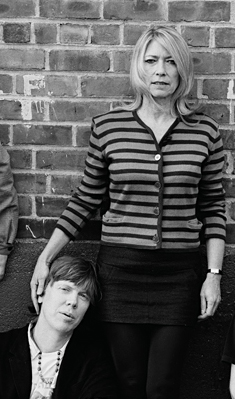“Arthur is dead. Now I am broke and in debt.”
This was the essence of an e-mail that soured many inboxes last February. It was like receiving some cryptic telegraph in the middle of wartime. And those who knew what the sender, Jay Babcock, was talking about took it as a command to fly their freak flags at half-staff. Arthur magazine, a free bimonthly counterculture rag which, since 2002, had covered and branded the neo-psychedelic scene, profiling Devendra Banhart and Joanna Newsom, among others, was finished.
Apparently, Editor Babcock and Publisher Laris Kreslin (of Lime Publishing) had not been seeing eye-to-eye, and Babcock’s attempts to purchase Lime’s interest in Arthur had proved fruitless. This put a lock on Lime’s credit line with the bank and the printer, thereby placing the magazine on indefinite hiatus. That’s when Babcock decided to ring the magazine’s death knell.
This week, however, marks Arthur‘s triumphant return. As reported on SW‘s Reverb blog in July, Babcock finally wound up buying Lime’s half of the enterprise, a transaction that he celebrated with another e-mail, proclaiming: “I now own everything.” Babcock subsequently planned a “comeback” issue, which is slated to hit the streets any day now.
I was unaware of Arthur until I stumbled across issue No. 9 sometime in 2004 at Easy Street in Queen Anne. I picked it up because: (1) it was free, and (2) it featured doom-metal elder Wino on the cover. It was printed on recycled newsprint, folded tabloid-style, and had an allure unlike any other magazine I had seen in my lifetime. It felt like picking up a true document of a time and place in American culture, yet it also felt removed from the present, harkening back to the utopian visions championed by the hippie free press.
“Arthur looked uniquely wonderful,” says Light in the Attic publicist Chris Estey. “[It was] a modern variation on the ’60s counterculture free press, with a distinctive size and use of color and spot illustrations that were pleasantly hypnotic. Once deep enough inside any issue, most people realized that Arthur was completely different in [terms of] content as well.”
I remember issue No. 9 being crammed with an article on the MC5, tips from L.A. pirate-radio experimenter Sue Carpenter, and a profile on Northern Cal hippies and the Great Arcata-to-Ferndale Kinetic Sculpture Race. There was an advice column from backwoods blues great T-Model Ford, and a column on the accelerated evolution of human consciousness by present-day shamanism expert Daniel Pinchbeck. Not to mention the album review section C & D, in which two guys bicker over what CDs they’re listening to.
In any given issue, you could read about music, drugs, protest, meditation, metaphysics, sex, herbs, nature, communes, art, socialism, siphoning gasoline from SUVs, and hypnotizing cops by eating doughnuts in front of them. “There’s nothing very metropolitan about Arthur, and that appeals to me deeply,” say Robin Pecknold, frontman for local band Fleet Foxes (and brother of SW‘s clubs editor, Aja Pecknold). “It’s escapism for me. I read it to imagine myself in a place where everybody cares about these things, where Arthur is as big as Time magazine.”
In its heyday, Arthur seemed to attract a readership numbed by the glut of too-slick music and culture mags, just waiting for something truly unique to emerge. By the time Arthur had arrived, most music writing had devolved into an extension of P.R. firms, causing RJ Smith of Los Angeles magazine to dub Arthur “a success story in the age of print gloom.” When I picked up each new issue, it seemed Babcock was less interested in synchronizing the street date with new releases and more about being wildly idiosyncratic. Cover subjects ranged widely, from Sonic Youth bassist Kim Gordon to California hippie jammer Ethan Miller to country music icon Dolly Parton. Others were more obvious, such as Newsom and Brightblack Morning Light—but Arthur owned those acts long before Elle magazine included their songs in “hippie” fashion spreads.
“As a record-label publicist, I found Jay Babcock fascinatingly contrarian,” says Estey. “He turned down coverage on the Karen Dalton album Light in the Attic reissued because, he said, ‘It’s going to get enough coverage elsewhere,’ even though Dalton’s type of fan was probably best represented by the Arthur reader. Was he just giving me the brush-off, or could he actually see it would arouse too much press elsewhere and didn’t want to waste space on coverage on something already set to get appropriate-level public notice? In any case, Babcock is working with vision; hence the occasional skirmishes with comrades. Axiomatically, no damage equals no progress.”
Now, it seems Babcock is prepared to throw Arthur headlong into the future. The “comeback” issue is just as promising as all the past ones. Contents include an interview with 80-year-old Zen humorist Henry Jacobs, the third installment in Babcock’s history of all-ages shows in the U.S., an interview with Becky Stark of Lavender Diamond, and a significant interview with Yoko Ono by longtime Arthur contributors Byron Coley and Thurston Moore of Sonic Youth.
“You get the feeling they actually care enough to get involved,” says Pecknold. “It’s not just some lazy writers scraping a rag together for paychecks, giving everything three stars and talking about how the Shins changed Natalie Portman’s life. No bullshit, no posturing—just writers that care, writing about stuff that’sactually interesting.”








